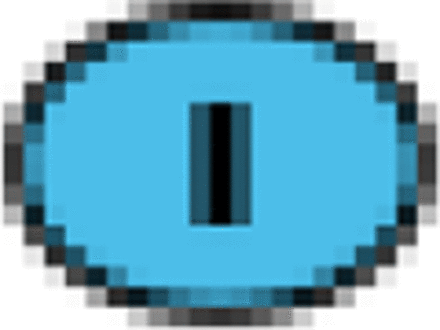Abstract
Introduction: Previous research has found an association between low health literacy and poor clinical outcomes in type 2 Diabetes Mellitus (T2DM) patients. We sought to determine if this association can be mitigated by a self-management support (SMS) program provided by trained health workers using a technology assisted menu driven program, called Connection to Health (CTH).
Methods: This study is a secondary analysis from a randomized trial of 2 similar versions of CTH implemented in 12 Northern California community health centers. As part of this, each participant completed a single validated question to assess health literacy. We used unadjusted and adjusted linear regression analyses to determine the extent to which baseline health literacy was predictive of prepost changes in hemoglobin A1c (HbA1c).
Results: Of 365 participants for whom prepost HbA1c data were available, HbA1c concentrations declined by an average of 0.76% (from 9.9% to 9.2%, 95% CI (0.53%–1.0%). Almost 114 (31.2%) of the participants had low health literacy, but there was no significant association between health literacy and the reduction in HbA1c concentrations in either the unadjusted or adjusted models, nor did baseline health literacy predict prepost changes in body mass index, medication adherence, exercise, or diet.
Discussion: The study found that implementing the CTH program in 2 versions via a randomized clinical trial improved HbA1c concentrations without increasing disparities between participants with high and low health literacy. This suggests CTH-like programs can enhance diabetes outcomes in community health centers without exacerbating inequities for those with low health literacy.
- Body Mass Index
- California
- Community Health Centers
- Community-Based Research
- Diabetes Mellitus
- Endocrinology
- Family Medicine
- Health Inequities
- Health Literacy
- Hb A1c
- Lifestyle
- Patient Education
- Patient-Centered Care
- Primary Health Care
- Regression Analysis
- Self-Management
- Surveys and Questionnaires
Introduction
Individuals with low health literacy experience challenges in obtaining optimal outcomes from medical care for type 2 diabetes mellitus (T2DM).1,2 These patients may have difficulties understanding medical instructions, communicating with health care providers, making informed health care decisions,3,4 or developing action plans for behavior change.5 T2DM self-management support (SMS) programs provide tailored patient education and goal setting, and therefore have the potential to mitigate the adverse effects of low health literacy on disease management.6,7 Most current SMS programs typically provide the following behavioral change tools: disease related information or education, behavioral screening and assessment, goal setting and action planning, obstacle assessment, linkages with resources, and ongoing action planning, follow-up, and monitoring. Although there is evidence that SMS programs improve glycemic management and lifestyle,8,9 prior research has not investigated whether electronic SMS programs achieve equivalent clinical and behavioral outcomes for patients with low health literacy as individuals with high health literacy. In the current report, we examine the impact of health literacy on clinical and behavioral outcomes in community health centers (CHCs) implementing Connection to Health, an evidence based T2DM SMS program.5,8
Methods
Design
This study is a secondary cohort analysis of a cluster randomized trial conducted in 12 CHC clinical sites in Northern California from 2017 to 2022. CHC sites implemented 1 of 2 versions of a Connection to Health (CTH), both of which involved menu-driven assessment, action planning, and follow up supported by an electronic tablet and health education team at each site.5,8 CTH is a third-generation comprehensive program focused on behavior change and uses web-based interactive technology. Patients complete a previsit assessment at their clinic focused on identifying gaps in self-management and action planning, allowing patients and health care teams to collaboratively set goals. In the second version, CTH was combined with evidence-based motivational interviewing activities to enhance patient engagement. Clinical and behavioral outcomes were measured 5 to 13 months postbaseline (latest available within the window). The current study includes 365 patients for whom baseline health literacy, and pre and post intervention hemoglobin A1c (HbA1c) results were available. Out of a total of 734, patients were excluded from the current study for the following reasons: 190 patients did not have baseline HbA1c readings within ∼1 year (368 days) before study commencement, 76 patients lacked any follow-up HbA1c value, 57 patients only had a follow-up HbA1c earlier than 5 months post baseline, 1 patient had a follow-up measurement only after 13 months post baseline, and 45 patients had a baseline HbA1c less than 7.
Measures
Health literacy was examined as a potential predictor of SMS outcomes and defined using responses to a single validated question “How confident are you filling out medical forms by yourself?”.10–12 The question was offered in both Spanish and English. Although this question may be a simplified approach to measuring health literacy, its simplicity may help improve measurement in the underserved population considered here. Patients were categorized as “low literacy” if they reported being not at all confident or a little bit confident, “medium literacy” if they reported being somewhat confident, and “high literacy” if they reported quite a lot of confidence or extreme confidence. Clinical outcomes included prepost changes in HbA1c, and body mass index (BMI) as recorded in the electronic medical record. Additional prepost changes in patient reported measures recorded by the SMS program included as outcomes in the current report are: healthy diet (assessed by number of daily servings of vegetables, days in the last week eat high fat/food from fast food restaurants, and daily sugar sweetened beverages), physical activity,13 number of days of missed medications,14 and number of social risk factors15 (measured by 4 items (yes/no) to assess: (a) “Running out of food before having enough money or food stamps to buy more,” (b) “Problems paying bills, like electric, gas, water, or phone bills,” (c) “Not having enough money to pay for bus fare or access to reliable transportation to medical appointments,” and (d) “Unstable housing including eviction, foreclosure, homelessness or staying with friends/family”).
Data Analysis
Change in HbA1c (ie, HbA1c at follow up minus HbA1c at baseline) was selected as the primary outcome, and other variables listed above were assessed as secondary outcomes. We developed a directed acyclic graph (DAG) of possible causal influences between the variables of interest (Figure 1) to identify confounding variables.16 In the unadjusted model, a linear regression coefficient between outcomes and health literacy was assessed. In the adjusted model, multiple linear regression coefficients were used to determine the relationship between health literacy and change in outcomes, while controlling for confounders (age, education, and social risk). All analyses were performed in STATA BE 17 (College Station TX, Stat Press, 2021). Two sets of analyses in which health literacy was coded either as a categorical (3 unordered levels) or ordinal variable (3 ordered levels, ie, low, medium, or high coded as 1, 2, 3, respectively) were conducted for both adjusted and unadjusted models.
Assumed model of causal influences. A Directed Acyclic Graph (DAG) causal model of influences between variables related to health literacy and diabetes clinical and behavioral outcomes such as hemoglobin A1c (HbA1c), health promoting behaviors, and body mass index (BMI). Based on the DAG, the minimal sufficient adjustment sets for estimating the total effect of health literacy on health promoting behaviors, HbA1c, and BMI are Age, Education, and Social Risk. DAG was made at https://www.dagitty.net/dags.html#. DAG color legend:  exposure,
exposure,  outcome,
outcome,  ancestor of outcome,
ancestor of outcome,  ancestor of exposure and outcome,
ancestor of exposure and outcome,  unobserved (latent),
unobserved (latent),  causal path,
causal path,  biasing path.
biasing path.
Results
Baseline data are summarized in Table 1. As there were no statistically significant differences between participants in the 2 versions of the SMS program on the key demographic, behavioral and HbA1c measures examined, all analyses were performed on pooled data (eg, the difference in baseline-corrected HbA1c between CTH and EECTH groups was −0.09 [−0.55, ±0.37], 95% confidence interval, P = .65). At baseline, lower health literacy was associated with lower vegetable intake (t = 2.56, P = .011 for high vs low health literacy; t =−0.04, P = .90 for medium vs low health literacy). Other baseline measures (HbA1c, BMI, medication adherence, exercise, fat, or sweetened beverage consumption) were not associated with baseline health literacy (P > .05). At follow up, HbA1c declined on average by 0.76% [1%, 0.53%] (8 mmol/mol, [12 mmol/mol, 5 mmol/mol] parenthesis shows 95% confidence interval), but, as presented in Table 2, there was no statistically significant effect of health literacy on this reduction (P > .05, adjusted and unadjusted models). Likewise, prepost changes in BMI (−0.11 [−0.81, 0.58]), medication adherence (−0.36 [−0.80, 0.08]), exercise (0.46 [0.14, 0.79]), vegetable intake (0.20 [−0.07, 0.47]), fat intake (−0.11 [−0.33, 0.11]), or sweetened beverage intake (−0.31 [−0.46, −0.16]) had no statistically significant association with health literacy.
Sample Characteristics
Discussion
The primary finding of this report is that the T2DM SMS interventions studied here provided similar reductions in HbA1c, regardless of the baseline health literacy of patient participants. This is an important finding, as it indicates that SMS interventions, including those that use interactive web-based technologies like CTH, can be designed and implemented in ways that do not leave those with lower health literacy behind. The lack of statistically significant effect of health literacy on clinical and behavioral outcomes is highly noteworthy given that several more traditional care programs for patients with T2DM have been shown to exacerbate disparities in some key clinical and behavioral outcomes with strong effect sizes.3,17–19 What might explain the apparent lack of effect of low health literacy on health outcomes in the presence of these SMS programs? Some studies have found that interventions tailored to the needs of low literacy populations, incorporating easy-to-follow oral discussions, with patient empowerment and problem-solving strategies, produce better outcomes in chronic diseases for low health literacy patients.20,21 Thus, the combination of the computer-based, menu-driven systems for gathering information and supporting decision making with one-on-one support from a health educator might explain the effectiveness of CTH for patients with low health literacy. Because we previously found that low health literacy was associated with low action plan quality,5 we speculate that the beneficial effects may be mediated by improvement in perceived self-management competence and diabetes knowledge, which are known to be associated with health literacy17 and improve with clinician-assisted SMS.22
This study has some limitations. First, it had a relatively small sample size. Nevertheless, prior studies with lower sample sizes detected statistically significant association between health literacy and clinical outcomes with strong effect sizes,23,24 suggesting that the lack of a significant effect of health literacy is not merely due to the low statistical power. Second, it is possible that loss of patients without an HbA1c measurement in the follow up window may introduce a bias by underestimating the negative impact of low health literacy on change in HbA1c from baseline. However, we found that the majority of these individuals had high health literacy (76 high, 31 medium, 27 low) and that their baseline HbA1c was similar to those retained in the study (mean, 9.92%, standard deviation 2.47%). Thus, we believe our conclusions do not underestimate the negative impact of low health literacy. Third, this study does not investigate long-term HbA1c beyond 13 months. Finally, the study's focus on CHCs catering to a diverse, English, and Spanish-speaking safety net population within a single geographic region could potentially restrict the broader applicability of the findings to different primary care environments. Despite these limitations, this study is the first to demonstrate comparable SMS outcomes in T2DM patients with high or low health literacy and should encourage the development of SMS programs that improve population health without widening disparities for patients with low health literacy.
Regression Coefficients (Unstandardized) and P values for Association between Health Literacy (Coded as a Categorical Variable) and Baseline-Corrected Outcomes (ie, Outcome Value at Follow-up minus Outcome Value at Baseline) in an Unadjusted Model, and a Model Adjusting for Age, Education, and Social Risk
Acknowledgments
The authors would like to acknowledge Contra Costa County Health Services, whose medical staff and patients participated in program development and implementation of this research program, Jose Parra for help with organizing data, and Hilary Seligman, and Jean Feng for invaluable discussions as part of Devika Krishnakumar’s master’s Committee.
Notes
This article was externally peer reviewed.
Funding: This research was funded by the National Institutes of Diabetes, Digestive, and kidney diseases (1R18DK108039-01). Additional research infrastructure support was provided by the National Center for Advancing Translational Sciences, through the UCSF Clinical and Translational Sciences Institute and the San Francisco Bay Collaborative Research Network (UL1TR001872).
Conflict of interest: None.
To see this article online, please go to: http://jabfm.org/content/37/2/303.full.
- Received for publication August 31, 2023.
- Revision received November 13, 2023.
- Accepted for publication November 20, 2023.







